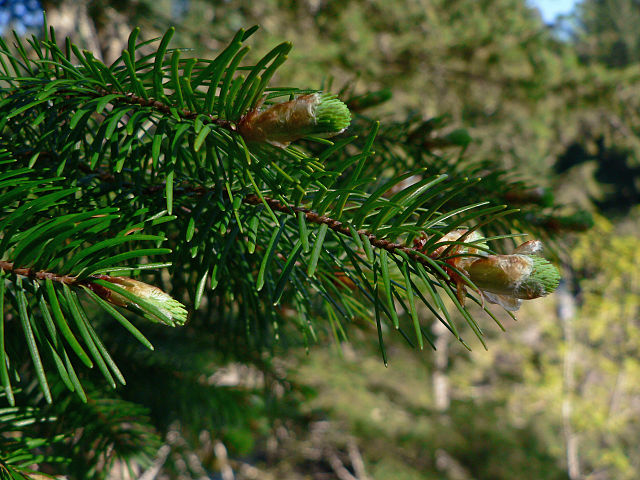Podocarpaceae is a large family of mainly Southern Hemisphere conifers, known in English as podocarps, comprising about 156 species of evergreen trees and shrubs. It contains 19 genera if Phyllocladus is included and Manoao and Sundacarpus are recognized.
Podocarpaceae
Conifers are a group of cone-bearing seed plants, a subset of gymnosperms. Scientifically, they make up the division Pinophyta, also known as Coniferophyta or Coniferae. The division contains a single extant class, Pinopsida. All extant conifers are perennial woody plants with secondary growth. The great majority are trees, though a few are shrubs. Examples include cedars, Douglas-firs, cypresses, firs, junipers, kauri, larches, pines, hemlocks, redwoods, spruces, and yews. As of 2002, Pinophyta contained seven families, 60 to 65 genera, and more than 600 living species.
Conifer
The narrow conical shape of northern conifers, and their downward-drooping limbs, help them shed snow.
Tāne Mahuta, the biggest kauri (Agathis australis) tree alive, in the Waipoua Forest of the Northland Region of New Zealand.
Pinaceae: needle-like leaves and vegetative buds of Coast Douglas fir (Pseudotsuga menziesii var. menziesii)





